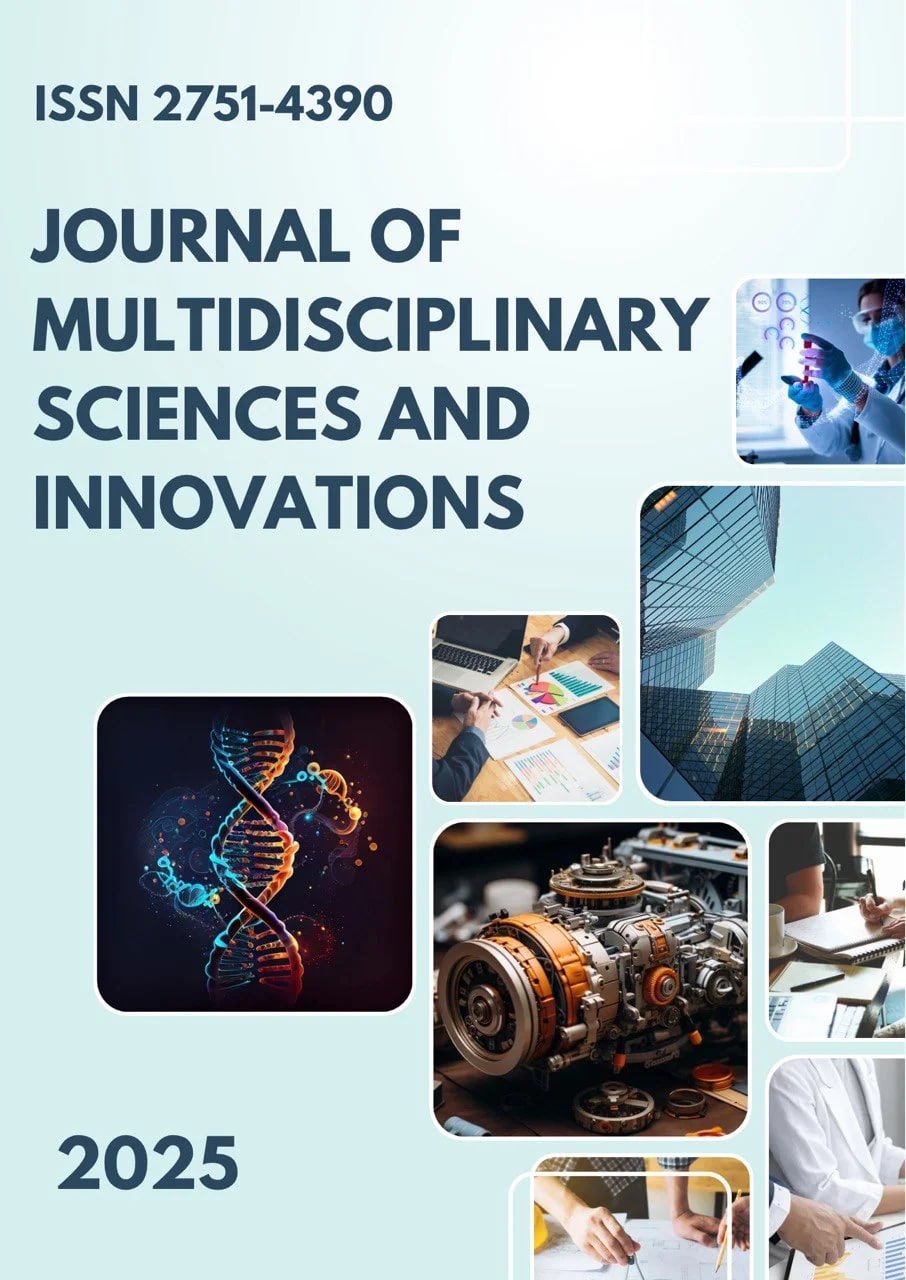SPEECH OF ADULT GIRLS IN THE OHANGARON VALLEY: LINGUISTIC AND SOCIOCULTURAL PERSPECTIVES
Main Article Content
Abstract
Women’s speech reflects sociocultural values, traditions, and identity. In Uzbekistan, the speech of adult girls in rural and semi-urban areas, such as the Ohangaron Valley, provides insight into the coexistence of cultural continuity and modern linguistic innovation.
Objectives: This study analyzes the linguistic and sociocultural features of the speech of adult girls in the Ohangaron Valley, with a focus on lexical, phonetic, pragmatic, and code-switching aspects that illustrate the interaction of tradition and modernity.
Methods: A qualitative ethnographic design was applied. Data were collected from 30 participants aged 18–25 through participant observation, semi-structured interviews, and natural conversation recordings in family, educational, and social contexts. The material was transcribed and analyzed using discourse analysis and sociolinguistic methods, with attention to lexical choices, phonetic features, politeness strategies, and instances of code-switching.
Results: Findings indicate that the speech of young women in the Ohangaron Valley is characterized by frequent use of kinship vocabulary and politeness markers, vowel reduction and intonation patterns typical of the regional dialect, and pragmatic strategies emphasizing respect and indirectness. Code-switching between Uzbek, Russian, and English was widespread, particularly in educational and digital communication, serving both pragmatic and identity-marking functions.
Conclusion: The speech of adult girls in the Ohangaron Valley demonstrates a duality of cultural preservation and innovation. While traditional norms and politeness strategies remain dominant in family and community contexts, globalization and education foster hybrid linguistic practices. This highlights language as both a custodian of cultural heritage and a medium of social transformation in contemporary Uzbekistan.
Downloads
Article Details
Section

This work is licensed under a Creative Commons Attribution 4.0 International License.
Authors retain the copyright of their manuscripts, and all Open Access articles are disseminated under the terms of the Creative Commons Attribution License 4.0 (CC-BY), which licenses unrestricted use, distribution, and reproduction in any medium, provided that the original work is appropriately cited. The use of general descriptive names, trade names, trademarks, and so forth in this publication, even if not specifically identified, does not imply that these names are not protected by the relevant laws and regulations.
How to Cite
References
1.Holmes, J. An Introduction to Sociolinguistics. Routledge, 2013.
2.Wardhaugh, R., Fuller, J. An Introduction to Sociolinguistics. Wiley-Blackwell, 2015.
3.Tannen, D. Gender and Discourse. Oxford University Press, 1994.
4.Fishman, J. A. Language and Ethnicity in Minority Sociolinguistic Perspective. Multilingual Matters, 2006.
5.Trudgill, P. Sociolinguistics: An Introduction to Language and Society. Penguin, 2000.
6.Cameron, D. Gender and language ideologies. In: Holmes, J., Meyerhoff, M. (eds). The Handbook of Language and Gender. Blackwell, 2003, pp. 447–467.
7.Uzbek Linguistic Research Institute. Regional Dialects and Sociocultural Communication in Uzbekistan. Tashkent, 2020.

